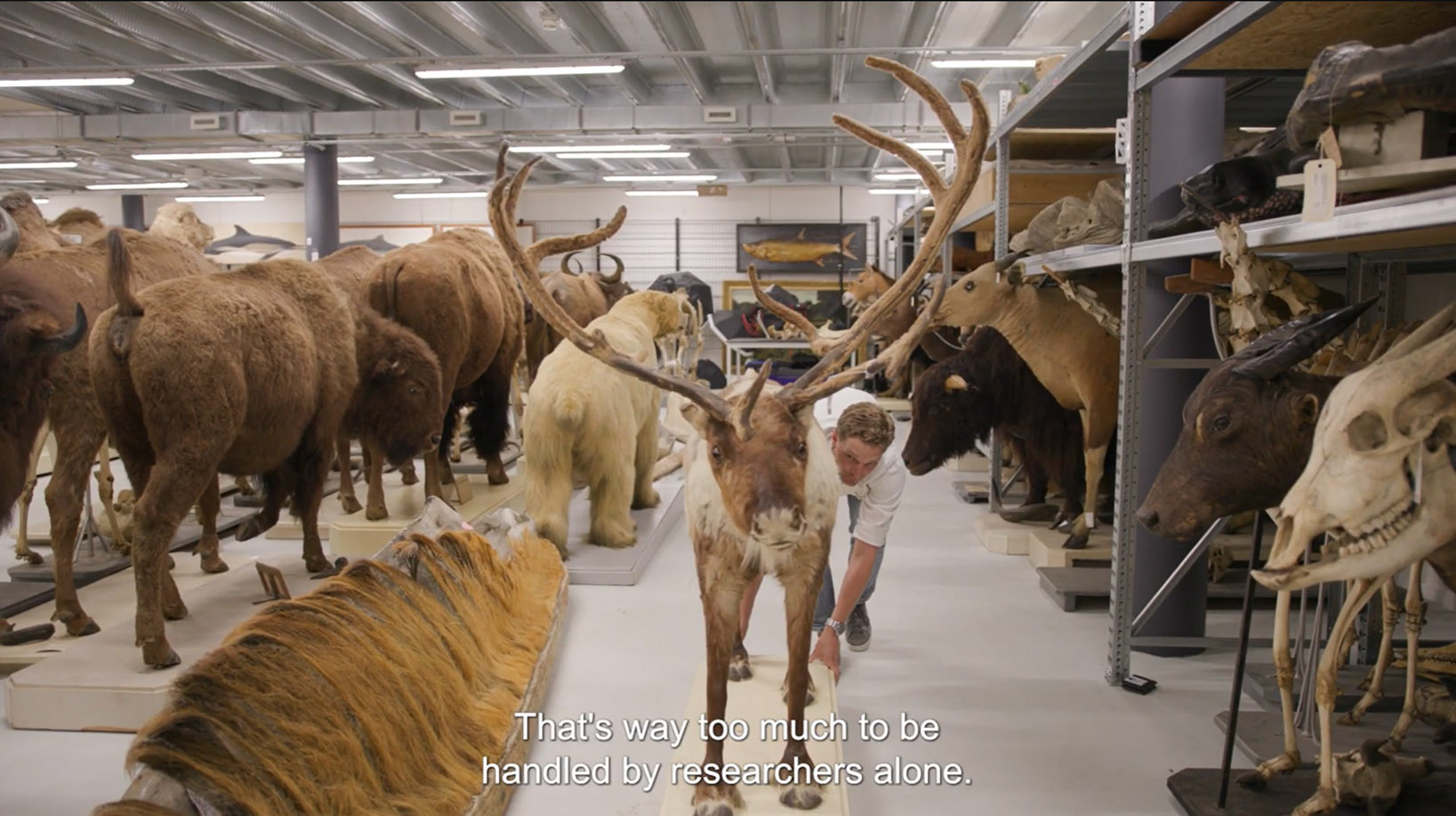
9 October 2023
DiSSCo’s new institutional video is online!
The new video explains the tangible added value of DiSSCo RI from the perspective of open and FAIR collections’ data.
By DiSSCo CSO
As DiSSCo enters its transition phase (DiSSCo Transition), it is time to give stakeholders and partners a clear pircture of the features of DiSSCo that are already outlining, in tangible terms, the impact that the future Research Infrastructure will have in how biodiversity research is done in Europe.
Scaling up and Speeding up
Global threats such as climate change or the unprecedented spiral of biodiversity loss that we witness today are multifaceted problems that require a deep understanding of life in our planet. However, we still have but limited knowledge of the species that are out there, let alone how they interact with each other and respond to big-scale environmental change. And the worst part of it is that we are simply running out of time.
As Helen Hardy warns in the video: “If we continue the way we have been it will be decades before we have the knowledge we need to tackle urgent problems like biodiversity decline. So we need a new approach, a new system that will bring together data, AI and automation and people, to get the best out of all of them.” In other words, we need a new system that allows us to scale up and speed up biodiversity research like never before.
The new DiSSCo video builds on this general premise to present DiSSCo as a crucial step towards that new model in the field of natural science collections (NSCs).

Photo: Visualisation of the concept of Digital Extended Specimen
DiSSCo’s impact: a new path for biodiversity research
DiSSCo’s new video highlights two fundamental areas where the future RI will produce true impact.
First, by establishing a model of NSC based on common practices across countries, thus giving way to a truly European single digital NSC.
Second, by providing that model with a FAIR data architecture able to interconnect knowledge across intitutions and facilitate the application of artificial intelligence systems for handling huge amounts of data. The cornerstone of this architecture is the Digital Extended Specimen.
The result of this is, as the video explains, a fundamental shift in how European biodivresity research is done: “The specimens that were once curated by individual taxonomists in individual collections will now connect to their digital surrogates binding all the available data across institutions and countries. As a result, the knowledge that is needed to discover, monitor and protect biodiversity will be harvested globally by researchers and experts working in collaboration within one scientific area or across domains.”

Photo: More than 2 billion specimens in european collections demand AI systems to support specimen curation and annotation.
DiSSCo would like to thank the following partners and individuals for their contribution to the production of the video:
- Individual contributors:
- Lorenzo Cecchi (University of Florence)
- Helen Hardy (Natural History Museum, London)
- Stefaan Pijls (Meise Botanic Garden)
- Sam Leeflang (DiSSCo CSO)
- Soulaine Theocharides (DiSSCo CSO)
- Jeremy Miller (Naturalis Biodiversity Center)
- Katja Peijnenburg (Naturalis Biodiversity Center)
- Andres Rivera (Naturalis Biodiversity Center)
- DiSSCo partners which provided additional footage:
- Naturalis Biodiversity Center
- Meise Botanic Garden
- University of Florence
- Natural History Museum, London
- Museum für Naturkunde
- National History Museum of Denmark
- University of Porto
- Museo Nacional de Ciencias Naturales (CSIC)
Do you want to know more about the technical side of DiSSCo? DiSSCo puts different technical knowledge platforms at the scientific community’s disposal:
DiSSCoTech: Get the latest technical posts about the design of DiSSCo’s Infrastructure
DiSSCo Labs: A preview of experimental services and demonstrators by the DiSSCo community
DiSSCo GitHub: Code hosting for DiSSCo software, version control and collaboration